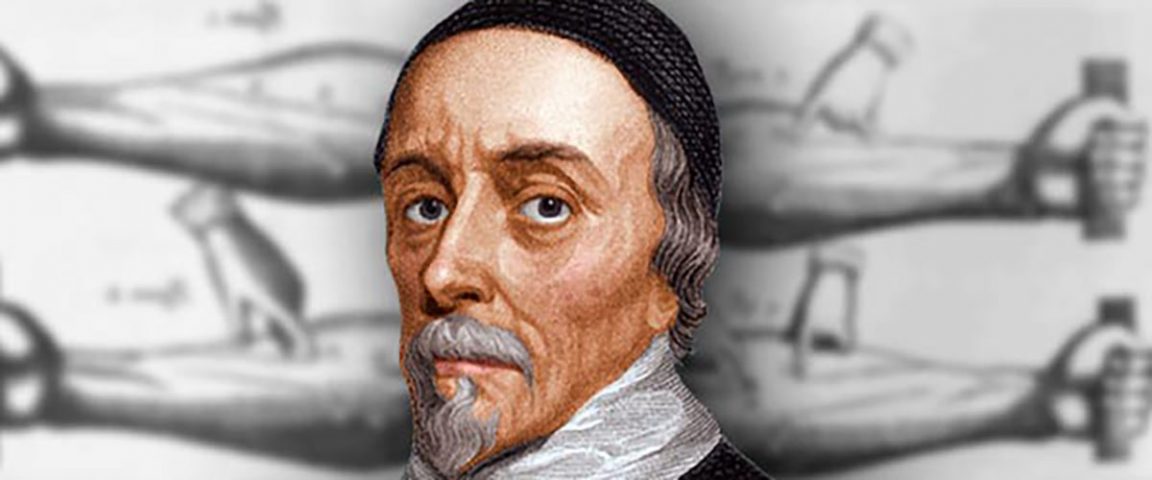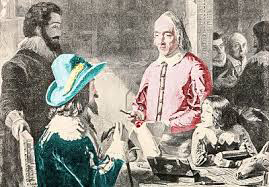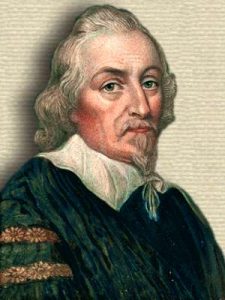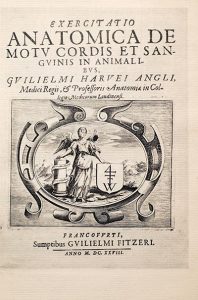- Have any questions? Contact us!
- info@dr-rath-foundation.org

Most medical students overconfident, underprepared on nutrition guidelines
October 26, 2017
A beam of light can check your blood pressure!
October 27, 2017William Harvey – A Physician Who Understood He Was Ahead Of His Time

By PAUL ANTHONY TAYLOR and MIRJA HOLTROP
English physician William Harvey (1578-1657) set milestones in the field of anatomy. He was the first known physician to provide a detailed description of how blood circulates through the body.
Harvey’s discoveries showed that some of the ideas of Galen – a Greek physician considered for over a thousand years to be the ‘father of medical knowledge’ – were completely wrong. For example, Galen theorized that the body had two entirely separate circulatory systems, believing that venous blood was generated in the liver while arterial blood was generated in the heart. Harvey, however, found there is only one circulatory system and that the heart pumps blood throughout the entire body. He also described how the pulsation of the arteries depends on the contraction of the left ventricle of the heart, while the contraction of the right ventricle propels blood into the pulmonary artery.
 These were major breakthroughs and Harvey subsequently went on to make still further important discoveries. For example, at that time it was known that there are small flaps inside the veins which allow the free passage of blood in one direction while inhibiting the flow of blood in the other direction. It was widely believed that the function of these flaps was to prevent pooling of the blood under the influence of gravity. Harvey, however, was able to show they are cardiocentrically oriented. He demonstrated that the flaps face downwards in the jugular veins of the neck, thus inhibiting the flow of blood away from the heart, as opposed to upwards and inhibiting pooling of the flow due to gravity.
These were major breakthroughs and Harvey subsequently went on to make still further important discoveries. For example, at that time it was known that there are small flaps inside the veins which allow the free passage of blood in one direction while inhibiting the flow of blood in the other direction. It was widely believed that the function of these flaps was to prevent pooling of the blood under the influence of gravity. Harvey, however, was able to show they are cardiocentrically oriented. He demonstrated that the flaps face downwards in the jugular veins of the neck, thus inhibiting the flow of blood away from the heart, as opposed to upwards and inhibiting pooling of the flow due to gravity.
Harvey also made estimates of the amount of blood flowing through the heart and the efficiency of the ventricles in expelling it. He counted the number of heartbeats per minute and was able to show that more blood passed through the heart than could be accounted for under the prevailing theories of that time. His findings indicated that the heart pumped between 0.5 and 1 liter of blood per minute. As the body clearly could not produce or consume this amount of blood so rapidly, Harvey correctly concluded that the blood was circulating through the body. (Today, we know that the heart pumps around 4 liters of blood per minute when the body is at rest, and 25 liters per minute when it is exercising).
 In spite of his research breakthroughs Harvey’s fellow physicians and the Church were not only reluctant to accept his work, they were actually in total denial as it would have shown their own beliefs and teachings to be false.
In spite of his research breakthroughs Harvey’s fellow physicians and the Church were not only reluctant to accept his work, they were actually in total denial as it would have shown their own beliefs and teachings to be false.
Crucially, therefore, Harvey realized that his discoveries risked him being identified as a heretic – as had already happened to other innovative physicians and scientists before him. He knew for example that in 1600, Giordano Bruno, a well-known lecturer at the university of Padua, was martyred at the Piazza del Fiore in Rome simply for spreading Copernicus’ findings that the sun is the center of the solar system; that the earth is a ball, not a disc; and that Rome is not the center of the universe.
Harvey understood that the lessons of history serve as a warning as to how authorities can react when challenged by people who are openly speaking the truth. When questioned, he therefore stated that Galen wasn`t wrong but that the human body had changed since back then. This simple trick prevented Harvey from facing court trials or execution.
Harvey’s landmark work Exercitatio Anatomica de Motu Cordis et Sanguinis in Animalibus (Anatomical Exercise on the Motion of the Heart and Blood in Animals) was published in 1628. The English version was published in 1653.
| “I profess both to learn and to teach anatomy, not from books but from dissections; not from positions of philosophers but from the fabric of nature.” |


Despite its scientific approach, however, Harvey’s work didn’t have the impact one might expect. Physicians, who until then had used Galen’s methods (purging or bleeding) for just about everything, would have faced ruin if they were to admit they had been wrong. Similarly, while the Church tolerated Harvey, it didn’t support him.
Replacing Galen’s books and approach was prohibited on the grounds that Harvey’s findings were considered unproven theories. (At that time, due to instruments such as the microscope having not yet been invented, Harvey was unable to definitively prove his discoveries). As a result, during his own lifetime, Harvey’s work had little impact on medical practice. Nevertheless, his patients included kings and aristocrats who highly valued his services.
Harvey realized that he was ahead of his time. Through understanding this he was successful in keeping the authorities happy and believing they were still in control while, at the same time, saving many lives – including his own.



